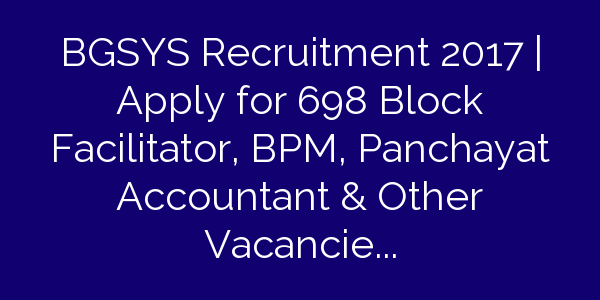Dr. A. P. J. Abdul Kalam Biography: A Legacy Beyond Missiles and Books
.png)
Dr. A.P.J. Abdul Kalam was an Indian aerospace scientist and the 11th President of India (2002–2007), widely known as the “Missile Man of India” for his pivotal role in the country’s defense and space programs. Born on October 15, 1931, in Rameswaram, Tamil Nadu, he rose from humble beginnings to become a key figure in India’s nuclear and missile development. Admired for his simplicity, vision, and dedication to youth and
|
Name |
A. P. J. Abdul Kalam |
|
Image |
|
|
Caption |
Dr. A. P. J. Abdul Kalam in 2008 |
|
Birth Name |
Avul Pakir Jainulabdeen Abdul Kalam |
|
Birth Date |
15 October 1931 |
|
Birth Place |
Rameswaram, Madras Presidency, British India (now Tamil Nadu, India) |
|
Death Date |
27 July 2015 |
|
Death Place |
Indian Institute of Management, Shillong, Meghalaya, India |
|
Resting Place |
Dr. A. P. J. Abdul Kalam Memorial, Pei Karumbu, Rameswaram, Tamil Nadu |
|
Nationality |
Indian |
|
Citizenship |
Indian |
|
Other Names |
"Missile Man of India" |
|
Education |
B.Sc. in Physics (St. Joseph’s College, Tiruchirappalli), Aerospace Engineering (MIT, Chennai) |
|
Alma Mater |
St. Joseph’s College; Madras Institute of Technology (MIT) |
|
Occupation |
Aerospace Scientist, Author, Professor, Politician |
|
Years Active |
1954–2015 |
|
Known For |
11th President of India (2002–2007), Leading Indian missile programs (Agni, Prithvi) |
|
Notable Works |
Wings of Fire, Ignited Minds, India 2020, Turning Points, My Journey |
|
Parents |
Father: Jainulabdeen (boat owner & imam); Mother: Ashiamma (homemaker) |
|
Relatives |
Brothers, sisters, nephews, and nieces |
1. Early Life and Education
Date and Place of Birth
Avul Pakir Jainulabdeen Abdul Kalam, popularly known as Dr. A.P.J. Abdul Kalam, was born on October 15, 1931, in Rameswaram, a small island town in the Ramanathapuram district of Tamil Nadu, India. His birthplace, situated near the shores of the Bay of Bengal, played a formative role in shaping his early character and values.
Family Background
Abdul Kalam hailed from a humble background. His father, Jainulabdeen, was a boat owner and imam of a local mosque, while his mother, Ashiamma, was a homemaker known for her compassion. Despite being financially disadvantaged, the family was spiritually and morally rich. Kalam was the youngest of four brothers and one sister. From a young age, he was instilled with values of discipline, honesty, and dedication.
Education History
Kalam completed his early schooling at the Schwartz Higher Secondary School in Ramanathapuram. Even during his childhood, he was a bright and hardworking student, known for his curiosity in science and mathematics. He pursued higher education at St. Joseph's College, Tiruchirappalli, graduating in Physics in 1954. Later, he joined the Madras Institute of Technology (MIT) in Chennai in 1955, where he specialized in aeronautical engineering. His time at MIT was instrumental in nurturing his dream to work in the field of aerospace and rocketry.
Early Interests and Influences
As a child, Kalam was deeply inspired by the stories of Indian freedom fighters and scientists. He would often read about Sir C.V. Raman, Visvesvaraya, and Albert Einstein. His early fascination with flying and engineering became the cornerstone of his professional journey. The values of simplicity and hard work taught by his parents also left a lasting impression.
2. Career
Career Beginnings
Dr. Kalam began his career in 1960 at the Aeronautical Development Establishment of the Defence Research and Development Organisation (DRDO). However, his career took a monumental turn when he joined the Indian Space Research Organisation (ISRO) in 1969. There, he was appointed as the project director of India’s first Satellite Launch Vehicle (SLV-III), which successfully deployed the Rohini satellite into near-Earth orbit in 1980 — making India a member of the exclusive space club.
Major Milestones
- SLV-III Project (1980): Successful launch marked India’s entry into satellite launching capability.
- Integrated Guided Missile Development Programme (IGMDP): As the chief architect, Kalam was instrumental in the development of Agni, Prithvi, Akash, Nag, and Trishul missiles.
- Pokhran-II Nuclear Tests (1998): As the Chief Scientific Adviser to the Prime Minister and the DRDO head, Kalam played a pivotal role in India’s nuclear weapons tests, cementing his legacy as the “Missile Man of India.”
In 1998, Abdul Kalam became a central figure in India’s nuclear weaponization, overseeing the Pokhran-II nuclear tests alongside Dr. R. Chidambaram. These strategic tests, conducted under utmost secrecy, projected India as a nuclear power, reinforcing national security and scientific prowess.
Impact:
- Asserted India’s global standing.
- Strengthened indigenous defense capabilities.
- Demonstrated Kalam’s leadership under pressure.
The Pokhran mission earned him the Bharat Ratna, India's highest civilian award, in the same year.
- Presidency (2002–2007): Elected as the 11th President of India, Kalam served as the “People’s President”, admired for his humility, accessibility, and vision.
In 2002, Kalam was elected the 11th President of India—the first scientist and bachelor to occupy the Rashtrapati Bhavan. Popularly called the “People’s President,” he redefined the presidency with his accessibility, humility, and futuristic vision.
Kalam used his position not for political influence but to connect with the youth, promote education, and advocate innovation.
Key Initiatives as President:
- Vision 2020: A transformative blueprint for a developed India.
- Igniting Minds: Youth engagement through direct communication.
- Digital and Rural Empowerment: Focus on inclusive growth.
He frequently quoted: “Dream, dream, dream. Dreams transform into thoughts and thoughts result in action.”
Significant Achievements
- Leading India’s missile and nuclear weapons programs.
- Playing a pivotal role in making India self-reliant in space and defense technology.
- Earning the title of the “Missile Man of India.”
- As President, he pushed for technological innovation in education, healthcare, and rural development.
Collaborations and Partnerships
Dr. Kalam worked closely with Indian defense scientists, engineers, and bureaucrats. He collaborated with ISRO, DRDO, and various national institutes. He also had a strong association with Dr. Vikram Sarabhai, Satish Dhawan, and R. Chidambaram. Later in life, he partnered with academic institutions like IITs, Anna University, and Banaras Hindu University, inspiring thousands of students.
Education Advocate and Youth Mentor
After his presidency, Kalam chose not to retire. Instead, he became a visiting professor at institutions such as:
- IIM Shillong, Ahmedabad, and Indore
- Anna University
- Banaras Hindu University
He launched movements like:
- What Can I Give Mission – Encouraging youth to give back to society.
- Energy Independence Mission – Advocating renewable energy.
He believed in "giving more to the nation than you receive."
3. Personal Life
Marital Status and Spouse(s)
Dr. A.P.J. Abdul Kalam remained unmarried throughout his life. He dedicated himself wholly to science, service, and the nation.
Hobbies and Interests
A man of diverse interests, Kalam loved:
- Veena playing (he was trained in Carnatic music)
- Reading scriptures like the Bhagavad Gita, Quran, and Bible
- Writing poetry, especially in Tamil
- Flying, a lifelong passion rooted in his dream to become a fighter pilot
Philanthropy and Activism
After his presidency, Kalam engaged in educational and social activism. He launched the initiative "What Can I Give?", encouraging youth to fight corruption. He donated all his presidential earnings to PURA (Providing Urban Amenities to Rural Areas) and educational causes. He was also a strong advocate for clean energy, rural empowerment, and youth development.
Values and Leadership Style
What set Kalam apart was not just his scientific brilliance but his values:
- Integrity
- Simplicity
- Discipline
- Compassion
He refused special treatment, lived in simplicity, and donated most of his income to education funds. His leadership style was inspirational, inclusive, and visionary.
4. Death and Legacy
Circumstances of Death
Dr. Kalam passed away on July 27, 2015, while delivering a lecture at the Indian Institute of Management (IIM), Shillong. He suffered a massive cardiac arrest and collapsed mid-speech. He was 83 years old.
Funeral and Memorial Details
His body was flown to Rameswaram, where he was laid to rest with full state honors on July 30, 2015. Dignitaries from all over the world paid homage. His tomb is now a popular memorial site known as the Dr. A.P.J. Abdul Kalam National Memorial.
Posthumous Recognitions
- Several institutions were named after him, including the Dr. A.P.J. Abdul Kalam Technical University in Uttar Pradesh.
- UNESCO declared October 15 as World Students’ Day in his honor.
- Statues, scholarships, books, and awards were instituted in his name.
Influence on Field or Society
Kalam’s legacy goes beyond science; he became a symbol of integrity, wisdom, and national pride. He continues to inspire millions as a role model for students, scientists, and leaders alike. His vision for India 2020 remains a cornerstone for strategic development thinking.
Legacy: A Light That Lives On
Dr. A.P.J. Abdul Kalam’s life story is one of transcending barriers, fueling dreams, and serving humanity. He continues to be:
- An icon of hope
- A mentor to millions
- A moral compass for leadership
How Kalam Inspires Generations:
- He proved that humble origins are no limitation.
- He balanced science and spirituality with ease.
- He used power not for privilege, but for public good.
- He spoke directly to the youth, empowering them.
Kalam often said, “You have to dream before your dreams can come true.” His dream was India—strong, united, innovative, and compassionate.
5. Awards and Honors
List of Awards with Years
- Padma Bhushan – 1981
- Padma Vibhushan – 1990
- Bharat Ratna – 1997 (India's highest civilian award)
- Indira Gandhi Award for National Integration – 1997
- Veer Savarkar Award – 1998
- Ramanujan Award – 2000
- King Charles II Medal (UK) – 2007
- Hoover Medal (USA) – 2009
Honorary Degrees
Dr. Kalam received over 40 honorary doctorates from universities across the globe, including:
- Carnegie Mellon University (USA)
- Nanyang Technological University (Singapore)
- University of Wolverhampton (UK)
- Anna University (India)
Other Recognitions
- Named in the Top 100 Influential Asians of the 20th Century
- Time magazine referred to him as the “Most Loved President” of India
- Google India celebrated his birth anniversary with a Google Doodle in 2015
Eternal Flame of Inspiration
Dr. A.P.J. Abdul Kalam’s journey from Rameswaram’s shores to Rashtrapati Bhavan’s grandeur is a symbol of what’s possible in a free, democratic, and determined India. He was not just a man of science but a man of heart, action, and legacy.
In a nation that continues to rise, his message still echoes:
"Let us sacrifice our today so that our children can have a better tomorrow."
Inspiring, eternal, and unforgettable—Dr. Kalam lives on in the dreams, books, missiles, classrooms, and every aspirational Indian soul.
6. Bibliography
Dr. Kalam was a prolific author, penning several books that resonated with both technical and general audiences:
|
Title |
Year |
|
India 2020: A Vision for the New Millennium |
1998 |
|
Wings of Fire: An Autobiography |
1999 |
|
Ignited Minds: Unleashing the Power Within India |
2002 |
|
The Luminous Sparks |
2004 |
|
Mission India |
2005 |
|
Inspiring Thoughts |
2007 |
|
Turning Points: A Journey Through Challenges |
2012 |
|
Transcendence: My Spiritual Experiences with Pramukh Swamiji |
2015 |
|
Forge Your Future |
2014 |
सरकारी नौकरियों, जीके अपडेट्स और करेंट अफेयर्स की ताज़ा जानकारी सबसे पहले पाने के लिए:
-
हमारे WhatsApp चैनल को फॉलो करें:
https://whatsapp.com/channel/0029Vb6sjZz0wajwDXcd5B0U -
हमारे Telegram चैनल को फॉलो करें:
https://t.me/educationmastersin -
हमारे Facebook Page को फॉलो करें:
https://www.facebook.com/educationmastersindia






.jpg)
.png)
.jpg)
.jpg)
.jpg)

